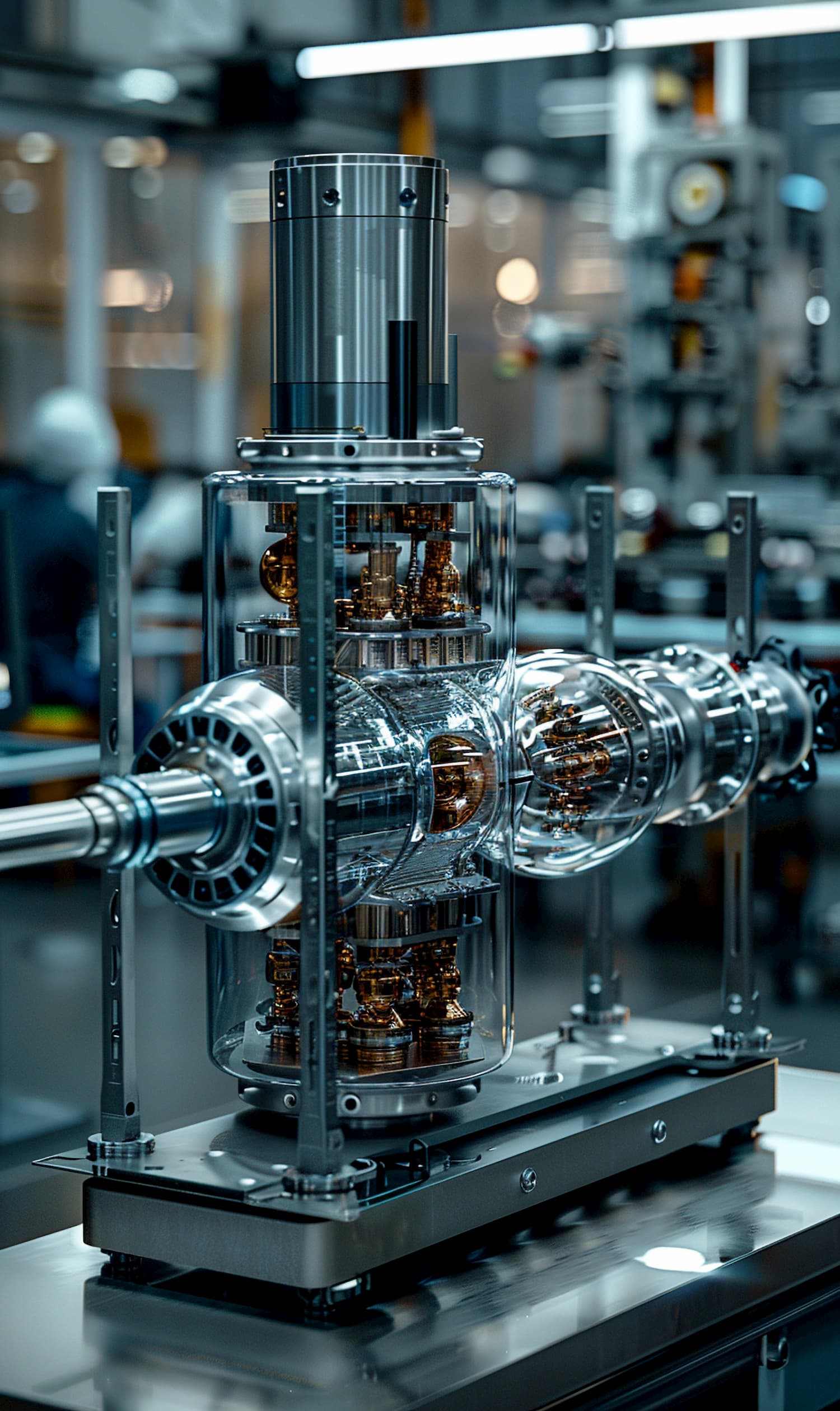Vibromonitoring Balancing Technology.
Vibromonitoring – is a method of equipment technical condition monitoring based on vibration datamathematical analysis. On of the most important ways to increase the efficiency and reliability of equipment is constant monitoring of its technical condition. Diagnostics is an integral part of repairs, allowing the user to identify equipment defects and analyze causes of its failure….
Vibromonitoring – is a method of equipment technical condition monitoring based on vibration data
mathematical analysis. On of the most important ways to increase the efficiency and reliability of equipment is constant monitoring of its technical condition. Diagnostics is an integral part of repairs, allowing the user
to identify equipment defects and analyze causes of its failure. The solution is based on the technology
of three-dimensional vibrations recording at a surface point. The feature of the technology is the lack
of phase and time delays among the axes (4D = 3D + time / synchronization). The analysis of the turbine trajectory vibration pattern is carried out, and any abnormalities, defects and cracks are revealed.
This allows the user to conduct three-dimensional balancing of large turbines, eliminate imbalance
and establish the vibration plane.

Advantages of technology
- Our measures and analyzes complex vibrations and determine precisely how they arise in nature (i.e. measurement approach corresponds with physical nature of vibration)
- The technology is based on measuring the three-dimensional vibration at any point on the surface of an object and therefore takes into account spacial movement of vibrating point
- Building a more complete and informative trajectory image
- Objects’ total energy numerical evaluation (too high energy level leads to breakage/accident, shows state of the equilibrium, etc.)
- Always kept time information between axes (4D = 3D + time / synchronization)
Problematics:
- Excessive repair costs
Scheduled repairs are conducted to reduce equipment failures and maintain its good working condition. At the same time, scheduled repairs involve both faulty and non-faulty parts replacement. - Equipment downtime because of failure
Unpredictable failures lead to unforeseen equipment downtime and financial losses. Moreover, each emergency stop breaks the manufacturing process and causes extra risks and financial losses. - Large assortment of operating equipment
Operating a wide variety of equipment is not critical, but leads to some problems, which may cause financial losses, i.e., difficulties related to repairs and maintenance planning, inventory management, etc.
Brief Description of the 4D Method of Dynamic Balancing
- For balancing all three components X, Y and Z of the vector of disbalance are used.
- The vector of disbalance is considered the real vector of vibration witn maximum length wich is built on rotational speed.
- For balancing new rotor with two balancing e it is necessary to make three runs: empty run run with known weight on the left balancing plane (trial) run with known weight on the right balancing plane (trial)
- After this the software returns: mass of the weight and its position (angle) on the left plane; mass of the weight and its position (angle) on the right plane.
- After 4D balancing the total energy of the system was decreased by 2.5– 7 times comparing to the conventional balancing of the same rotor.
- The method can be easily adapted to multy-plane balancing.
Vibromonitoring: the way to identify defects
Three-dimensional vibration measurement
Our method is based on three-dimensional vibration measurement at a surface point. This innovative method allows us to draw a detailed three-dimensional phase pattern, which would be substantially changed by any defect.
Three-dimensional vibration measurement
Reducing the number of iterations leads to a decrease in balancing weights and the total weight of the system to be balanced. The initial consideration of vector imbalance of components makes it possible to perform balancing with no additional adjustments.
Real-time vector measurement
Through real-time vibration vector measurement at a particular material surface point, our method ensures more informative data representation as compared to traditional techniques. This is due to the lack of phase dispersion among measurement channels or axes, which increases the informative value.
System energy assessment
Three-dimensional vector measurement allows us to assess the vibrational system energy in order to reduce total energy after one-dimensional balancing. This includes solving the problem of real three-dimensional vector imbalance and axial vibration.
Three-dimensional vibration measurement
Our method is versatile, it is suitable for dynamic balancing of all rotor types and allows us to perform balancing of a flexible rotor with 1–3 modes using the same number of iterations as for a rigid one. Such efficiency is achieved due to precise assessment and less non-matching vibrations on X and Y axes.

Theoretical Background
- Great amount of valuable information
in comparison with known methods by considering the phase of signal between channels– the measuring axes. Our method is based on measurements of the real oscillation vector at every point in time at a real physical point on the surface of an object. - Energy estimation of the system’s oscillations
Since we are measuring the 4D vector, we can measure and evaluate the energy of the system’s oscillations, which is a prerequisite for high-quality balancing. The method allows us to perform quality control of standard one-dimensional balancing. Our experiments showed that the total energy of the system after one-dimensional balancing can be reduced by using the balancing on vibration changes along other directions. We have proposed a way of three-dimensional balancing based on reducing the real 3D unbalance vector and not its one-dimensional projection, as it is implemented in standard systems that use a single-component vibration sensor. - Two sensors – three modes
While the soft rotors are spinning, volume oscillations of a certain form occur and they correspond to the form of modes, which are detected by our sensors. This information allows us to balance the soft rotor with one to three modes for the same number of iterations as the hard one; i.e. our method is a multipurpose method for the dynamic balancing of all types of rotors.
- Reducing axial vibration
During the calculation of the balancing weights we reduce all 3 components of vibration including axial vibration, because our balancing method is based on measuring the three-dimensional vector. This is proven by our experiments. - Evaluation and reduction of MISMATCHED oscillations on X and Y
Our experiments have shown that the unbalance vector projection on the balance planes has unequal components. By default, when balancing using the single-component sensor, it is considered that these projections are equal to each other. This requires additional launches during balancing, which consume time, resources and materials. Our method primarily considers this fact, allowing us to perform balancing without an additional adjustment of results. - Reducing the number of weights and their masses
It is worth noting that performing additional iterations during balancing leads to an increased number of balancing weights, resulting in an increase of their combined mass, and therefore an unreasonable increase of the balanced system.
